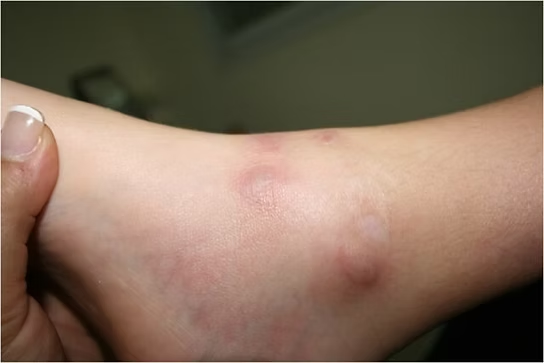Dehydration
- Fysiobasen

- Dec 15
- 5 min read
Dehydration occurs when the body loses more fluid than it takes in. This disrupts the delicate balance between fluids and electrolytes that the body’s cells and tissues depend on to function normally. Dehydration may be caused by illness, hot and dry climates, prolonged exposure to sun or heat, insufficient fluid intake, or the use of diuretic medications.

Body Water and Dehydration in Different Age Groups
Water makes up about 60% of body weight in men and around 50% in women. Children need more water than adults relative to body weight due to higher energy expenditure, but most children get what they need if they drink when thirsty. In older adults, the thirst mechanism may be impaired, and people over 60 who drink only when thirsty often consume only about 90% of their fluid requirement.
In children, dehydration is usually caused by acute fluid loss and insufficient intake, particularly with illnesses involving vomiting, diarrhea, or fever. Infants can become severely dehydrated within hours of illness, and dehydration is a major cause of morbidity and mortality among children worldwide¹.
Types of Dehydration
Isotonic dehydration: Equal loss of water and electrolytes (most common)
Hypertonic dehydration: Greater loss of water than salt (increased sodium in blood)
Hypotonic dehydration: Greater loss of salt than water (reduced sodium in blood)²
Causes (Etiology)
Body water is lost through skin, lungs, kidneys, and the gastrointestinal tract. Dehydration develops when fluid loss is not replaced.
Main causes:
Skin: Heat, sweating, burns, severe skin diseases
Lungs: Increased respiration, fever, asthma, COPD
Kidneys: Diuretics, kidney disease, diabetes, salt-wasting tubulopathies, Addison’s disease, hyperglycemia
Gastrointestinal tract: Vomiting, diarrhea, laxatives, gastric lavage, fistulas
Other causes: Reduced consciousness, immobility, impaired thirst, medications, acute infections, and sepsis³
Prevalence
Healthy adults with access to water rarely become dehydrated, but any adult may do so during illness (e.g., with hyperglycemia). Older adults have a 20–30% higher risk due to immobility, reduced thirst, diabetes, kidney disease, or falls⁴.
Symptoms and Clinical Presentation
Early and mild signs:
Thirst, dry mouth and lips
Mild dizziness, especially when standing
Reduced concentration, fatigue
Decreased urine output, dark urine
Dry skin, fewer tears, sunken eyes
Moderate and severe dehydration:
Absent or very little urine
Headache, muscle cramps, weakness
Nausea, restlessness, irritability
Low blood pressure, especially when standing (orthostatic hypotension)
Rapid, weak pulse
Sunken fontanelles in infants
Loss of skin elasticity, wrinkles, cold and bluish skin (cyanosis)
Confusion, decreased consciousness
In severe cases: seizures, shock, organ failure, and death⁵⁶
Fluid loss thresholds:
5–6% fluid loss: Increased fatigue, headache, numbness/tingling
10–15% fluid loss: Muscle cramps, wrinkled skin, delirium, painful/severely reduced urination, visual disturbances
>15% fluid loss: Life-threatening, often fatal⁷
When to Contact a Doctor
Persistent or increasing vomiting for more than 24 hours
Diarrhea lasting more than two days
Fever above 38.5 °C
Reduced or absent urine output
Marked weakness or confusion⁸
Diagnostics
The diagnosis of dehydration is made through a combination of clinical examination and laboratory tests.
Clinical signs: The patient may present with confusion, low blood pressure, rapid pulse, fever, absence of sweating, and reduced skin elasticity. In infants, examination includes checking the fontanelle (soft spot on the head), absence of sweating, and reduced muscle tone.
Laboratory tests:
Blood tests to assess kidney function, sodium, potassium, and other electrolytes
Urine test to check color and concentration (dark, concentrated urine indicates dehydration)
Complications

If left untreated, dehydration can lead to serious complications:
Low blood volume: Causes reduced blood pressure and poorer oxygen delivery to tissues; life-threatening in severe cases.
Seizures: Electrolyte disturbances may trigger muscle or febrile seizures.
Kidney failure: May cause kidney stones, urinary tract infections, and, in the worst cases, kidney failure.
Heat-related injuries: Range from mild cramps to heat stroke and life-threatening conditions⁹.
Differential Diagnoses
The most important distinction is whether fluid loss is due to water loss alone, or also blood loss. In cases of blood loss, blood replacement is required; in cases of fluid loss, fluid replacement is needed. Additionally, the underlying cause of dehydration must be investigated and treated (see etiology in the previous section).
Treatment
The main principle is to restore fluid balance, either through oral intake (clear fluids such as water, broth, or sports drinks) or intravenous fluid therapy in cases of severe dehydration.
Avoid: Drinks with caffeine (coffee, tea, cola) or alcohol, as these act as diuretics.
Treat the underlying cause: For example, medications for diarrhea, nausea, or fever when necessary.
Physiotherapy and Prevention
Physiotherapists play an important role in prevention, particularly by educating patients about fluid requirements, risk factors, and signs of dehydration.
Patient education:
Teach patients to recognize symptoms of fluid deficiency and when to seek medical help¹⁰.
Provide advice on fluid needs in heat, cold, and during physical activity.
Environmental factors:
Heat: Always drink before feeling thirsty, especially before outdoor activity. The American Heart Association recommends drinking before going into the heat to keep the body in balance.
Cold: Cold weather can suppress thirst and increase fluid loss through respiration. Training in cold conditions can raise fluid loss by 15–45 ml/hour. Heavy clothing may also increase sweating and fluid loss.
Physical activity:
Before exercise: Drink 3.5–6 dl fluid two hours before activity.
During exercise:
Less than 1 hour: 5–9 dl water
1–3 hours: 5–9 dl fluid per hour (preferably sports drink with 6–8% carbohydrate and sodium)
More than 3 hours: Same as for 1–3 hours, but with increased sodium supplementation
Avoid caffeine and alcoholic beverages before and during activity.
Do not overdrink plain water—there is a risk of hyponatremia with excessive intake.
Monitor weight changes and urine color. Drink about 4.5–5 dl fluid for each half kilo of body weight lost during activity¹³.
References
The Free Dictionary. Dehydration. Available from: https://medical-dictionary.thefreedictionary.com/dehydration (accessed 12.7.2021).
Dehydration – What is Dehydration? News-Medical website. Available from: http://www.news-medical.net/health/Dehydration-What-is-Dehydration.aspx (accessed 30.3.2017).
Taylor K, Jones EB. Adult Dehydration. In: StatPearls [Internet] 2020 Mar 24. StatPearls Publishing. Available from: https://www.statpearls.com/articlelibrary/viewarticle/37754/ (last accessed 18.11.2020).
Taylor K, Jones EB. Adult Dehydration [Updated 2021 May 19]. In: StatPearls [Internet]. Treasure Island (FL): StatPearls Publishing; 2021 Jan. Available from: https://www.ncbi.nlm.nih.gov/books/NBK555956/ (accessed 12.7.2021).
Survival Scoop. Signs of dehydration – why you need water. Available from: http://survivalscoop.blogspot.com/2010/08/signs-of-dehydration-why-you-need-water.html
Goodman C, Snyder T. Differential Diagnosis for Physical Therapists: Screening for Referral. 5th ed. St. Louis, MO: Saunders; 2013. p. 171.
Rehydrate.org. Dehydration: Why is it so dangerous? Available from: http://rehydrate.org/dehydration/index.html (accessed 3.4.2017).
WebMD. Dehydration – Home Treatment. Available from: http://www.webmd.com/fitness-exercise/tc/dehydration-home-treatment#1 (2015) (accessed 30.3.2017).
Medical News Today. Dehydration. Available from: https://www.medicalnewstoday.com/articles/153363#complications (accessed 12.7.2021).
Centers for Disease Control. Dengue Clinical Case Management E-learning: Hydration Status. Available from: https://www.cdc.gov/dengue/training/cme/ccm/Hydration%20Status_F.pdf (accessed 3.4.2017).
American Heart Association. Staying Hydrated – Staying Healthy. 2014. Available from: http://www.heart.org/HEARTORG/HealthyLiving/PhysicalActivity/FitnessBasics/Staying-Hydrated---Staying-Healthy_UCM_441180_Article.jsp#.WOWKD5H3ahA (accessed 30.3.2017).
Quaglio L. The Dehydration Equation. American Fitness. Winter 2017. Available from: SPORTDiscus with Full Text (accessed 30.3.2017).
Pariser G. Nutrition for Exercise Performance. PowerPoint presentation given at Bellarmine University, Spring 2016.









